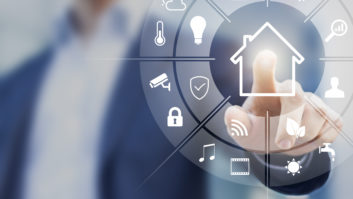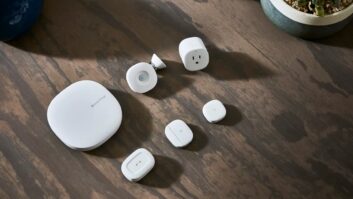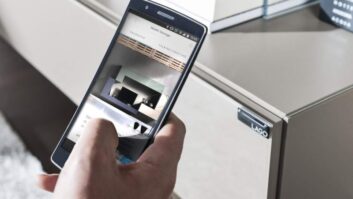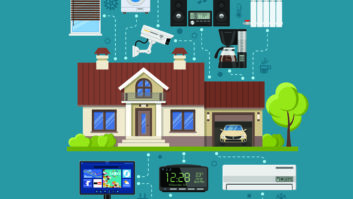
The senior population in the United States is expected to see substantial growth, rising from 52 million in 2018 to an estimated 95 million by 2060 according to the Population Reference Bureau. This demographic shift has the potential to bring about significant staffing and housing shortages in assisted living facilities. Technology has the ability to help tackle these challenges and enable aging adults to stay in their homes independently for as long as possible. Adopting smart devices can help provide accessibility and comfort, all while supporting the care of this rapidly expanding demographic.
At Josh.ai, we see a future where a connected environment will greatly enhance the lives of individuals in assisted living situations by addressing three key areas:
- Health and Wellness
- Comfort and Safety
- Engagement and Entertainment

Health and Wellbeing
Medication Management —Smart home technology has the power to be a valuable tool for users that rely on strict medication regimens to manage their health conditions. Proactive voice announcements can provide easy access to medication schedules, enabling seniors to manage their own care. For example, a senior or caregiver can set reminders for medication with Josh.ai such as, “Hey Josh, set a reminder every day at 9:00 AM to take my Lisinopril.” This simple reminder from an assistant can help delay the need for full-time care, particularly for those with memory loss or cognitive impairment.
Sleep Regulation — Adequate rest is critical for maintaining overall health and well-being for all individuals, especially seniors. Sleep plays a pivotal role in allowing the body to recharge and restore itself, counteracting the negative effects of daily stressors. Smart home technology can be utilized to create a sleep-conducive environment by dimming lights, adjusting the temperature, and masking outside noise. Control of environmental devices, paired with motion sensors to monitor how frequently someone is getting up in the middle of the night, provides caretakers and family members with a way to ensure the living patterns of loved ones remain balanced.
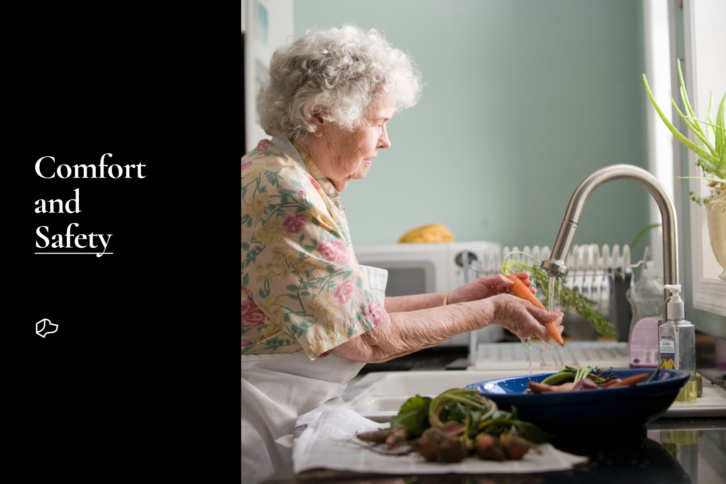
Comfort and Safety
Movement Optimization —Implementing smart home technology such as voice assistants and motion sensors can aid in promoting and tracking movement, respectively. By setting reminders to get up and go for a walk and receiving notifications of movement, caretakers can keep track of seniors without being overbearing. Additionally, sensor technology can assist in identifying potential hazards or emergency situations, allowing for prompt medical response if needed.
Remote Monitoring — Installing surveillance and sensor solutions for remote monitoring not only provides seniors with a sense of independence but also offers peace of mind for everyone invested in their wellbeing. Research has shown that remote monitoring technology can improve the quality of life for older adults, particularly those with chronic conditions. For example, a study by the Faculty of Nursing at the University of New Brunswick found that the use of remote monitoring systems allowed older adults to live at home longer and provided caregivers with relief. These solutions also give family members the ability to check in on their loved ones and ensure they are safe, which can alleviate feelings of guilt or worry.

Engagement and Entertainment
Socialization —Voice assistants have the potential to greatly reduce social isolation among seniors by enabling easy access to television, music, and even another being in the room to interact with. Seniors can easily navigate through a variety of entertainment options without needing to learn how to operate complicated remotes or other manual interfaces thanks to Josh.ai’s contextual voice control. Additionally, proactive announcements scheduled throughout the day have the power to reduce the risk of self-isolation and depression. A gentle nudge from a voice assistant like, “Would you like to call a friend?” or “It’s almost 4:00 PM, are you joining the community happy hour?” provide seniors with a reminder to interact with others or go out to enjoy social activities.
As the senior population in the United States continues to grow, it is becoming increasingly important to address the need for solutions that enhance their quality of life. One way to do this is by implementing technology-based solutions that address the unique needs and challenges faced by this demographic while providing caretakers with tools to monitor their well-being. Smart home technology and voice control have the potential to greatly enhance the lives of those that require assistance but desire independence.
At Josh.ai, we are fortunate to be in a position to help a group of people that can truly benefit by using our technology. Our team is looking forward to a future where those who require assistance are enabled with simple, private, and magical experiences in their living spaces.
About the Author
Max Fiore is marketing communications associate at Josh.ai.
Sources
- Mather, Mark, et al. “Fact Sheet: Aging in the United States.” PRB, https://www.prb.org/resources/fact-sheet-aging-in-the-united-states/.
- Read, Emily A et al. “Stakeholder Perspectives on In-home Passive Remote Monitoring to Support Aging in Place in the Province of New Brunswick, Canada: Rapid Qualitative Investigation.” JMIR aging vol. 5,2 e31486. 11 May. 2022, doi:10.2196/31486
This article originally appeared on residentialsystems.com.
See also: Addressing The Power Problems In Consumer Electronics








